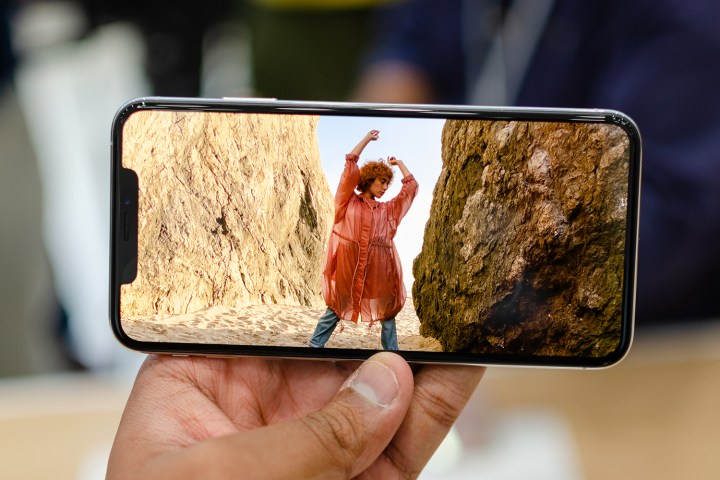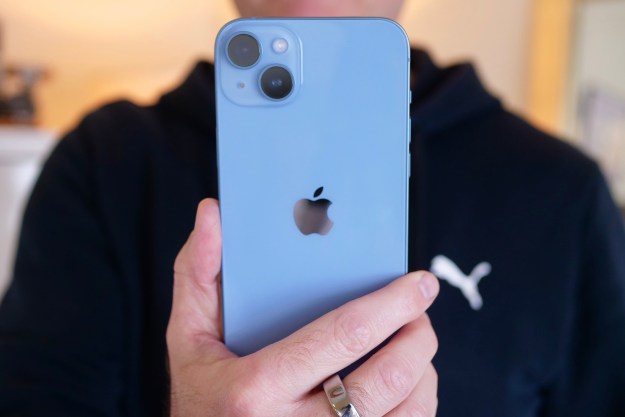
2019 has barely begun, and we haven’t even seen a new iPhone yet this year, but that doesn’t stop speculation about the next, next generation of iPhones — those that will be released in 2020. As you might suspect, there are few details on an iPhone that’s over a generation away (although 5G is table stakes), but there is still a little to sink our teeth into.
Display
What will Apple do with the iPhone’s screen in 2020? The 2020 iPhone may come in three different sizes, and introduce a phone that’s smaller than the current iPhone XS, according to a new report from analyst Ming-Chi Kuo. Kuo suggests that there will be a 5.4-inch model and 6.7-inch model with 5G, along with a 6.1-inch model with LTE. All devices will have OLED displays. This lines up with a previous DigiTimes report. The smallest model will apparently have a 5.42-inch screen, while the larger models will have either a 6.06-inch or 6.67-inch screen. If this is accurate, expect the sizes to be rounded up to 5.5-inches, 6.1-inches, and 6.7-inches.
The iPhone XS has a 5.8-inch screen and is the smallest current iPhone, followed by the 6.1-inch iPhone XR, and the 6.5-inch
Apple has been relatively slow to adopt OLED tech in its phones. The iPhone XS and XS Max also came with OLED screens, but the iPhone XR has an LCD that Apple calls a Liquid Retina display. It’s expected this lineup will continue in 2019. We’ve heard before that Apple is working towards an all-OLED range. According to the Wall Street Journal, Apple’s supplier of LCD screens, Japan Display, foresees Apple’s abandonment of LCD tech and is seeking support from investor groups to survive the loss of business.
Camera
We may have learned a little about the 2020 iPhone’s camera due to a change of plans for the 2019 iPhone. We should look out for a new, powerful three-lens camera system with a laser 3D sensor, according to sources speaking to Bloomberg. While a three-lens camera may arrive on the 2019 iPhone XS Max replacement, the 3D sensor has been delayed until 2020. It’s designed to increase depth perception accuracy, and enable augmented reality features. It may operate at distances of up to 15 feet. Apple is reportedly working with Sony on the sensor.
The camera’s 3D augmented reality features may also pave the way for an AR headset Apple is said to still be working on, and may also arrive at some point in 2020. There is also a chance the 3D camera system may debut on an iPad Pro in early 2020, before arriving on an iPhone later in the year.
Design
How will an iPhone still almost two years away from reality look? We don’t know yet, but we should expect, “larger changes,” to the design in 2020, say sources talking to Bloomberg, compared to the 2019 models. This will be forced on the company due to the planned adoption of 5G connectivity. The new technology impacts material choice, device size, and battery capacity.
5G
The likes of Intel and Qualcomm may well be locked in a battle over next-gen communications chips, which will help phones connect to futuristic 5G networks going forward. And the biggest of those contracts, at least when it comes to consumer devices, has to be the iPhone. Well, it looks like Intel may have won that contract. A report from Fast Company says that Apple will go ahead with using Intel modems for the first
The report somewhat puts to rest rumors that suggested Apple would be ditching Intel for 5G modems in the 2020 iPhone. In June, Calcalist reported that Apple had notified Intel that it would not be using Intel modems. The outlet soon corrected its story, however, to say that Apple wouldn’t use Intel Wi-Fi and Bluetooth chips — not that it wouldn’t use Intel
Still, even if Apple isn’t using Intel Wi-Fi and Bluetooth chips, one thing is for sure, Apple wants to reduce its dependency on other companies. Apple’s legal battles with Qualcomm have been well documented over the past few years, and they’re likely to continue, leaving only two options: Stick with Intel or make its own 5G modems. For now, it seems as though the company has chosen the former.
The news has to be good for Intel. In June, Bloomberg reported that Apple was looking to move away from Intel chips, instead turning to MediaTek for its communications components. On top of that, there have been plenty of reports indicating that Apple was looking to move away from using Intel processors altogether by 2020. Right now, it looks like those talks may have been as a plan B, in case the company couldn’t come to an agreement with Intel.
When it comes to specific modem models, the Fast Company report suggests that the 2020 iPhone will use Intel’s 8161 chip, which will be fabricated with the 10-nanometer process. The 8161 hasn’t actually been formally announced yet — we know that Intel is testing a precursor to the chip, called the 8060, and Fast Company reports that the 8060 will be the chip that Apple uses to prototype the 2020 iPhone.
No matter what direction Apple ends up going, pretty much all reports hint at one thing, Apple will be releasing its first 5G iPhone in 2020. By that time, most U.S. carriers should have rolled out at least early versions of their
Updated on June 17, 2019: Added report from Ming-Chi Kuo on display sizes.
Editors' Recommendations
- An Apple insider just revealed how iOS 18’s AI features will work
- iPhone SE 4: news, rumored price, release date, and more
- This new folding phone costs less than half the price of the iPhone 15 Pro Max
- Everything you need to know about the massive Apple App Store outage
- This could be our first look at iOS 18’s huge redesign



